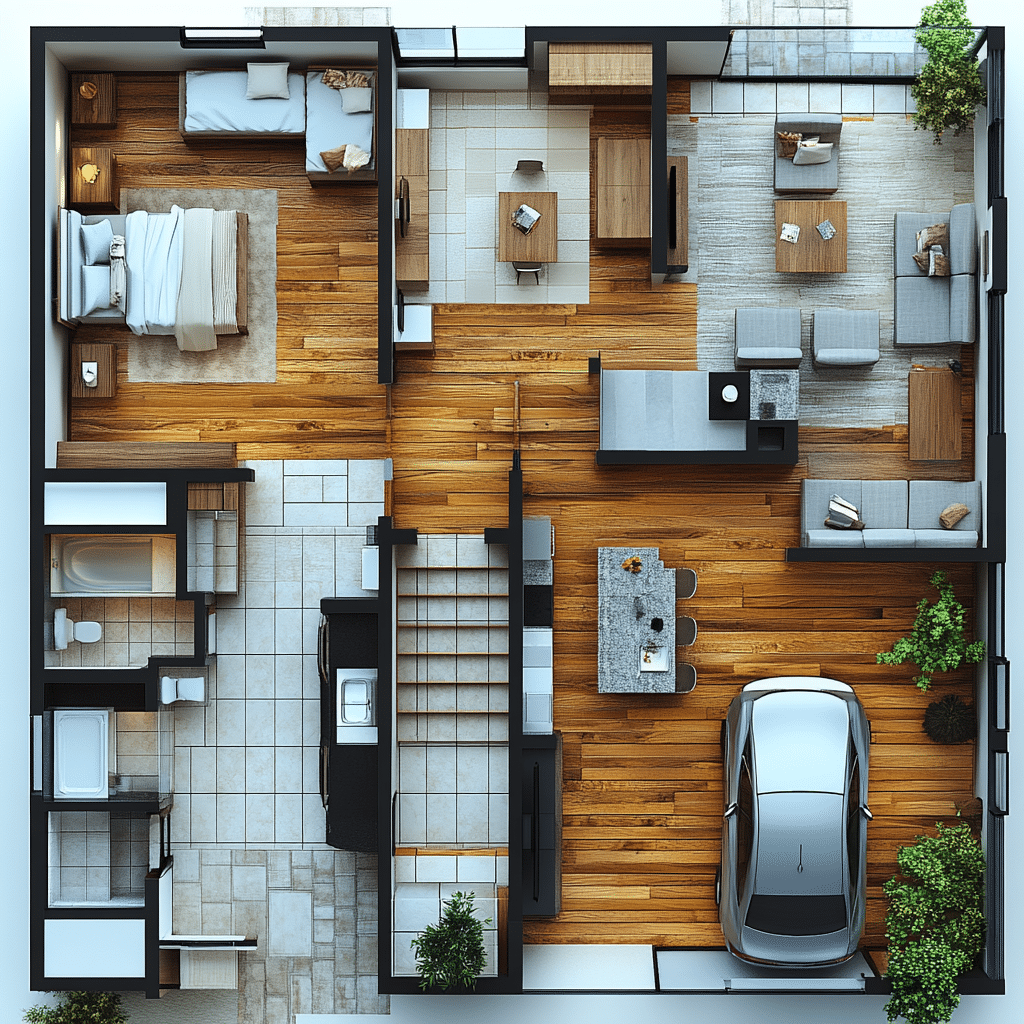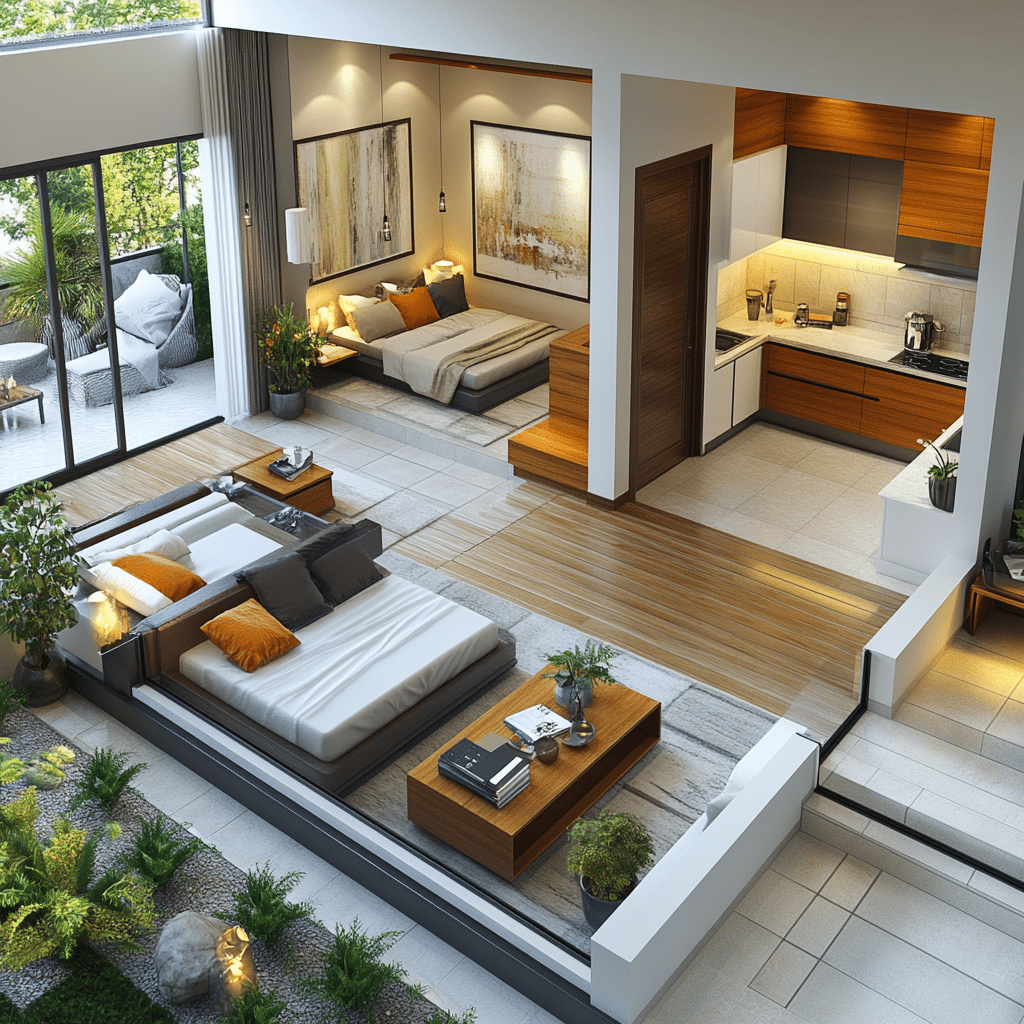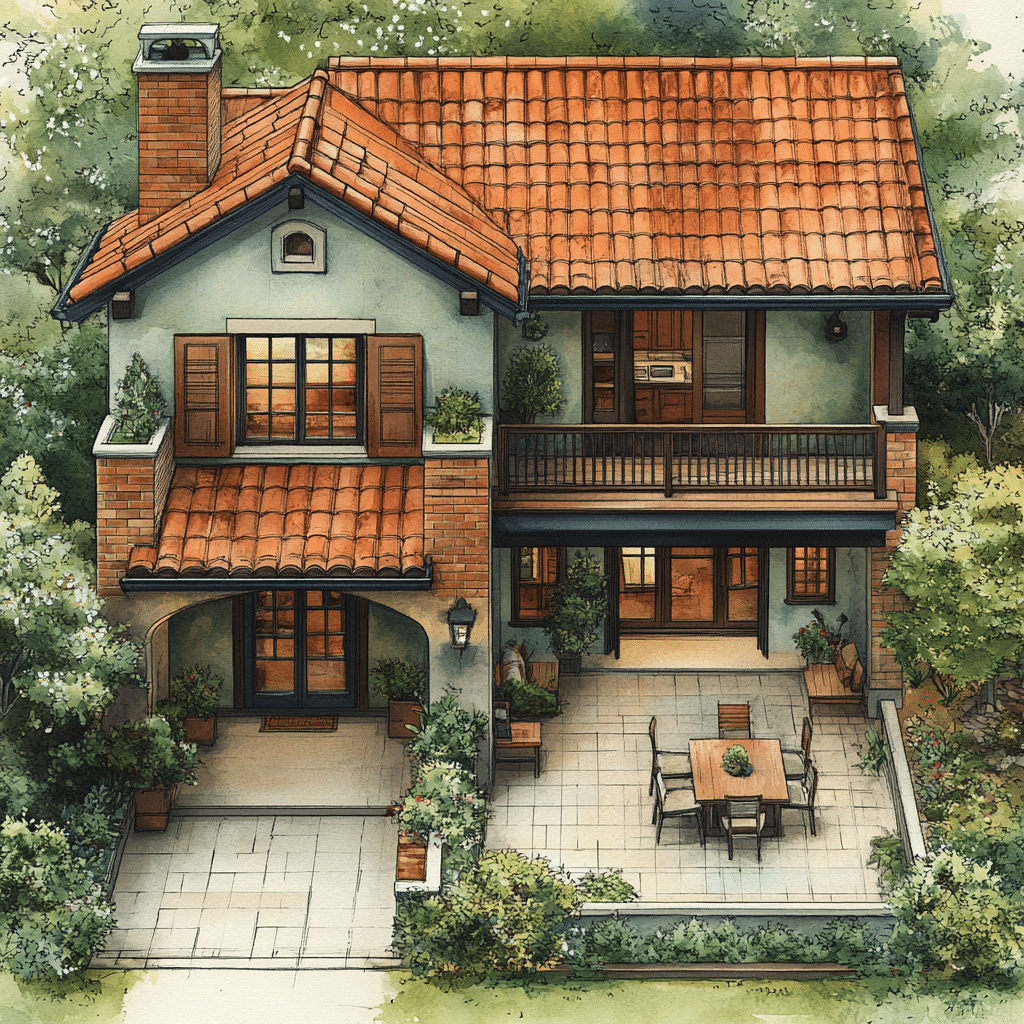In today’s bustling real estate market, understanding the average sqft of house is more crucial than ever, especially if you’re in the process of buying or refinancing a home. Did you know the average house size in the U.S. has been on quite a journey? The typical American home has changed with time, reflecting societal shifts, economic fluctuations, and evolving lifestyle preferences. Whether it’s the size of house in 1950 or the burgeoning average size of house 2022 has witnessed, this narrative of expansion and change is as colorful as a Renoir painting. Let’s roll up our sleeves and dive into how these transformations affect you, the savvy homeowner or potential buyer, bringing clarity to your mortgage journey.

The Evolution of House Size: Average Sqft of House Over the Decades
The Size of Houses in 1950
Post-war America saw an explosion of suburban living, where homes were pragmatic and compact. Back then, Levittown’s model homes were the epitome of the American Dream: a modest 983 square feet. Families were smaller, the economy was rebounding, and the focus was on simplicity. This era was shaded by socio-economic influences like the GI Bill, which facilitated home purchases for returning veterans. Who would’ve guessed these tightknit spaces would lay the groundwork for the sprawling squares we see today!
The Transition of the 1980s
Fast forward thirty years, and things began to stretch—quite literally! By 1980, the average house size in the U.S. climbed to 1,740 square feet. Consumer prosperity fueled by a robust economy encouraged larger homes; families desired more personal space and the emergence of the family room. Formal dining rooms were rebuffed in favor of expansive, casual gathering areas. Americans redefined living spaces with flair, embracing design innovations that sparked new trends.
Modern Trends in 2022 and Beyond
Come 2022, the beat of change drummed louder than ever. The average size of new homes soared to an impressive 2,333 square feet. Work-from-home evolved from a temporary fix to a preferred lifestyle, solidifying home offices and versatile spaces as essentials. As the pandemic shifted perspectives, homeowners prioritized function alongside luxury. Amenities for remote work became just as enticing as polished granite counters.

The Present-Day Perspective: Average House Size in the U.S.
National Trends
The present stage paints houses larger and more distinct than before. Today, the average house size in the U.S. dances around 2,261 square feet, but let’s not miss the geographical rhythm here. States like Texas boast generous plots, prompting larger homes, while Massachusetts’ limited land supplies tighter confines. According to recent U.S. Census Bureau data, this disparity highlights just how much geography influences creating one’s castle. For more insight into different Kinds Of Houses varied by state, Mortgage Rater sheds light on type Of Houses across the country.
Suburban vs. Urban Homes
City life presents a stark contrast. Space is at a premium in urban centers such as New York, where the average apartment size may resemble the storage spaces in more rural homes. However, sprawling suburbs in places like Dallas can spread comfortably, embracing larger footprints. This divide structures how space is consumed and valued, evident from the high-rise apartments in NYC versus expansive ranch-style abodes nestled in Mentor Ohio county, showcasing diverse living experiences.
| Location | Average Square Footage | Key Features/Considerations |
| United States | 2,261 sqft | Large family homes, diverse styles, suburban preference |
| – California | 1,625 sqft | High prices, smaller urban homes, compact living |
| – Texas | 2,397 sqft | Larger homes, more land availability, suburban spread |
| – New York | 1,310 sqft | Smaller apartments common, high urban density |
| Canada | 1,792 sqft | Mix of modern and traditional homes, larger suburban spaces |
| United Kingdom | 818 sqft | Compact homes, emphasis on public spaces, growing urbanism |
| Australia | 2,032 sqft | Detached homes common, large plots, adaptation to outdoor living |
| Germany | 1,291 sqft | Efficient use of space, strong emphasis on energy efficiency |
| Japan | 1,020 sqft | Utilization of vertical space, smaller urban living areas |
| India | 1,150 sqft | Variation based on region, urban apartments generally smaller |
Factors Influencing Average Home Size in the U.S.
Economic Influences
Economic climates play a vibrant role in shaping house sizes. When the sun shines on employment rates and housing markets, expansion follows suit. During booms, such as the dot-com euphoria, larger, luxurious dwellings became attainable. Conversely, downturns prompted retrenchment and a nod to smaller homes. It’s like riding surfing waves of prosperity and restraint on the real estate shoreline.
Cultural and Lifestyle Trends
Lifestyle trends further catalyze shifts in size. The minimalist movement and eco-friendlier tactics encourage reduced footprints. Imagine the tranquil retreat of a tiny home revolution—it’s a stark contrast to sprawling estates. With societal shifts, from environmental awareness to digital nomadism, preferences sway toward harmony in living smaller yet smarter.
Comparing Regional Differences and Preferences
Coastal vs. Inland Regions
Regional preferences underpin house sizes with notable variance. California, hugged by coasts, grapples with space constraints, leading to ingenuity in smartly-designed, efficient homes. Midwestern regions, rich in land, frequently add those extra wings—game rooms, gyms, and gallery-like spaces permitting memories and, in niche cases, unique experiences as distinctive as those found in gallery Nudists communities.
Influence of Tech Hubs and Innovation
Tech hubs like Silicon Valley double down on size by both necessity and luxury, demanding homes with built-in offices and cutting-edge smart tech. Companies such as Google and Apple sculpt local real estate markets by increasing demand for spaces supporting remote talent. As a result, the average house size adapts to meet lifestyle demands in these bustling metropolises.
Future Predictions: What Can We Expect in House Sizes?
Technological Advancements in Construction
Peering into the crystal ball reveals incredible coming shifts. Tech, such as 3D printing and modular building, portends revolutions in construction. Imagine downloading a floor plan, sending it to a printer, and watching walls spring to life! These emergent methods promise unprecedented options in personalizing future homes.
Sustainability and Its Role in Home Size
Sustainability strides forward as more than a buzzword, shaping how homes are designed. Smaller, energy-efficient spaces brimming with sustainable materials could redefine the future of housing. As our eco-consciousness heightens, expect designs that harmonize with nature, offering novelty in living sustainably—perhaps influencing a leaner average house size in the process.
Final Thoughts: Reimagining Our Living Spaces
As we reflect on this journey, the evolution of the average sqft of house tells a tale of cultural and economic currents shaping where and how we live. As circumstances change and the definition of home expands, so too should our aspirations for comfort, functionality, and sustainability. Reading about these trends equips you with knowledge, helping navigate your own real estate adventures. So, whether you’re cozy in a cottage or stretching in a mini-mansion, let Mortgage Rater be your guide. Ready to discover how your dream flows with your walls, be it in size or spirit? Dive into the us median home price and see where your journey with us might lead!
Fun Trivia and Interesting Facts About the Average Sqft of House
Jumping into the quirkier side of the average sqft of house, let’s explore unexpected nuggets of info that might just surprise you!
How Big is Big, Really?
So, the average sqft of houses in America has evolved a lot over the years. Back in the 1950s, the typical home was about 1,000 square feet. Today, that space has ballooned to over 2,300 square feet! This mind-bending shift is driven by our hankering for bigger living spaces and an economy that encourages such desires. When considering movement mortgage, this preference is evidently supported by flexible financing options, making it easier to snag a big pad of your own.
Size Doesn’t Always Mean Spacious
It’s interesting to note that larger homes don’t necessarily guarantee roomier living. A house might flaunt an impressive square footage but still feel cramped if the space isn’t used wisely. For example, some celebrity homes, like that of Angelique Lewis, might have sprawling entertainment spaces but comparatively tiny bedrooms. Maximizing utility requires a clever touch, often turning these giants into oddly cramped spaces if designed without thought.
The Power of the Credit Score
Ever wondered how your credit score affects your home-buying ventures? Well, achieving the best credit score possible significantly impacts your purchasing power and the kind of mortgage you can secure. You might find that having a sterling score allows you to aim for a house with a higher square footage without stretching your budget too thin. It’s all about the balance between financial acumen and spatial desire!
An Unlikely Influence
And for a quirky detour, did you know that lifestyle preferences, from tech to wellness, might sway housing trends? For instance, the rise of home tech or even trends like Cbd Dabbing could have ripple effects on how home spaces are structured, maybe encouraging larger den spaces or even secluded relaxation areas. It’s a world that just keeps evolving, shaped by innovations and lifestyle shifts. Each fact brings us closer to understanding the average sqft of house and its fascinating evolution!




